By Robert Heege
On March 18, 1799, a strange thing happened in the Near East backwater that today is Israel. In the years that followed the birth of Jesus, the rise of Christianity, and the fall of Byzantium, things in the region had quieted down considerably since the Mohammedan conquests (apart from the Crusades). Thus, it was with considerable alarm and a good deal of astonishment that Ahmed Pasha al-Jazzar, the geriatric governor of Sidon, who expected nothing more strenuous from a spring morning in the Middle East than to answer the Muezzin’s call to prayer, awoke instead to find a French army priming its muskets on his doorstep. The commander of those troops was the gifted, 28-year-old Napoleon Bonaparte.
How the French, only just beginning to emerge from the shadow of the guillotine and the fratricidal Reign of Terror that had gripped France since the overthrow of the monarchy, came to find themselves fielding troops to this distant desert land is a story in itself.
Since the Revolution of July 1789, the French radicals had spent the better part of the next 10 years indulging in what might be described as a reordering of society. To this end, nearly everything that was there before had to go. For starters, the number of days in the week was changed from seven to 10. The number of months in the year, reassuringly, held steady at 12, but each month was now only three “weeks” long, and each one of them was given a new name. The result was mass confusion. But then, there were other more immediate things for a Frenchman to worry about, like keeping his head.
In addition to taking a hammer and chisel to nearly every conceivable institution of society, church and state, the Jacobin Tribunals were also doing away with a lot of people. King Louis XVI and Queen Marie Antoinette were sent to the guillotine along with most of the other royals, aristocrats, and members of the upper classes who could not flee the country fast enough, followed, in due course, by the merchants, shopkeepers, and schoolteachers. In the end, not even the humblest seamstress was safe as the tumbrels rolled down the cobblestone streets day and night, feeding a seemingly endless supply of stunned human beings into the insatiable blades of the guillotines. Eventually, with so many headless corpses piling up, there was almost nobody left that was worth the trouble of killing, at which point the revolutionary leaders promptly began pointing fingers, denouncing, and beheading each other.
Finally, when Robespierre, the most rabid of the fanatics, was separated from his own murderous head, the surviving politicos attempted to cobble together a more reasonable, responsible, and markedly less bloodthirsty form of government called the Directory. It was well named, for with so many squabbling deputies, its member list resembled a small town telephone book of today. Out of this unwieldy government catalogue, one name above all was on everybody’s lips. Having ably defended the country’s borders from the armies of most of the other powers of Continental Europe, which had all attacked France in an effort to crush the revolution, it was the onetime corporal from Corsica, General Napoleon Bonaparte, who was the rising star of the political arena.
In an effort to protect the revolution and quite possibly get the young upstart conveniently out of the way by setting him upon a course that might prove to be his undoing, members of the Directory were demanding that Bonaparte lead an expedition to attack the British, France’s implacably hostile enemy. What they were baying for, in increasingly shrill tones, was a full-scale invasion of England. No doubt sensing some political skullduggery in their motives but not wanting to be seen as backing down from the challenge, Napoleon shrewdly proposed an alternate strategy: to strike a crippling blow against Britain by strangling her trade route to India. He would accomplish this by seizing the strategically vital island of Malta and capturing Egypt, thereby denying the British access to friendly ports in the eastern Mediterranean and cutting off any practical overland routes to the East Indies in the bargain. The members of the Directory approved the plan.
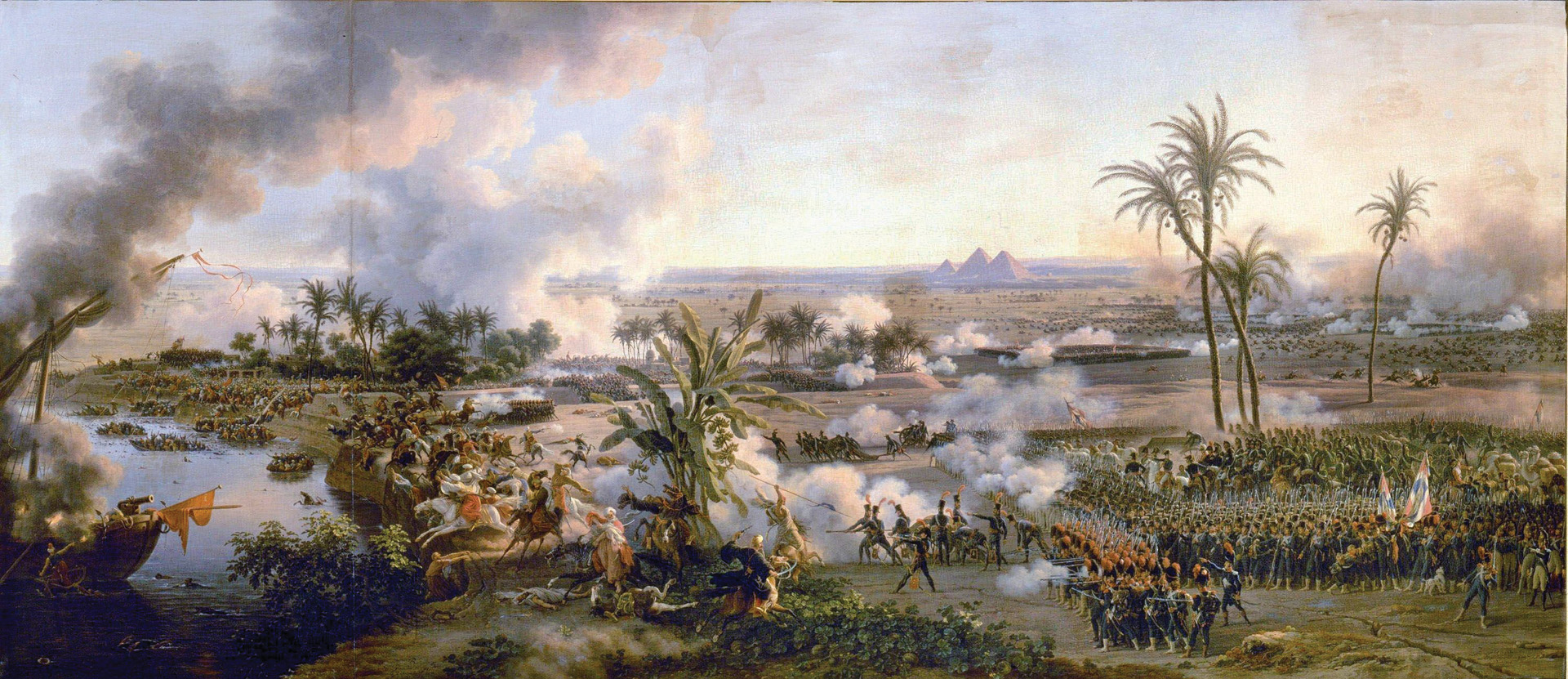
The die was cast. On May 19, 1798, Bonaparte set sail into the Mediterranean from Toulon with 100 warships under Vice Admiral Francois-Paul Brueys and 400 transports carrying five infantry divisions and one of cavalry, 35,000 men in all, and almost immediately began to exceed expectations. By June 12, he was master of the storied Isle of Malta, its fabled Knights bowing to the inevitable andsurrendering their treasure house. On July 1 and 2, the French landed in Egypt and easily captured Alexandria. At Shubra Kit on July 13, Bonaparte set the locals to their heels, and on July 21, four miles from Cairo within site of the Giza Plateau at what became known as the Battle of the Pyramids, his infantry squares withstood repeated massed cavalry charges from the pride of Egypt, mowing down horse and rider alike with deadly artillery and musket fire that sent the Mameluke warriors of Murad Bey scurrying south, leaving several thousand dead in their wake, while those of Ibrahim Bey, who had shrewdly kept their distance on the opposite bank of the Nile, fled for the safety of the Sinai. The French lost a mere 29 men. On July 24, the victorious Napoleon entered Cairo.
It was an auspicious beginning to the campaign, but Jazzar Pasha, soon to become Napoleon’s adversary, though a gentleman of advanced years, was not a man to be taken lightly. To begin with, he was neither an Arab nor a Turk. What he was was a survivor. He was born in Stolac, in Bosnia-Herzegovina, an ethnic Albanian and a baptized Christian. The Ottoman Turks had conquered his people centuries earlier, and also all the other southern Slavs, the Serbians and the Croatians, the Albanians, Bulgarians, and the Romanians, nearly all of southeastern Europe. They still languished in 1799 within the oppressive Muslim empire of the Turks. Moreover, whether it was a particularly lovely girl or an unusually bright- eyed boy, the Turks had a nasty habit of kidnapping them from their families. Most would never see them again, and it was probably a blessing, albeit a cruel one.
While the girls who were dragged off in this bestial manner invariably got a one-way ticket to the slave quarters, seraglio, or harem, the most promising of the male children had a different fate in store for them. Routinely beaten and systematically brainwashed over many years, they were battle trained as they grew to young adulthood, forcibly converted to Islam, and inducted into the ranks of the Janissaries, the much feared mounted shock troops of the Ottomans they were indoctrinated to serve the sultan and his empire with a fanatical, bloodthirsty devotion. Appropriately, they took their name from Janus, the two-faced god of antiquity. The Turks often took a sadistic delight in unleashing these fair-skinned, heartless killing machines upon their own people.
Jazzar was indeed a survivor, and he was nobody’s fool. Everything he did, he did by choice. The spartan ranks of the Janissaries were not for him. Far from being a helpless victim, it was said that he had actually killed a man while he was still little more than a boy himself. Quickly taking flight to escape the axe of the executioner, which would have surely been his fate, he made his way to the capital of the Turkish Empire, to the vast slave markets of Constantinople, where he willingly sold himself into slavery.
Across the Mediterranean from Constantinople, a safe haven beckoned for an enterprising slave. Egypt had been conquered and absorbed into the Ottoman Empire several centuries earlier. Eventually, the administration of this Turkish outpost was given to the Mameluks, premier military caste of the Ottomans whose name reverberates in the region to this day.
Operating as a strange mix of elite soldiers and civil servants on behalf of a puppet governor-general, Mamelukes had become a privileged class in Egypt despite the fact that they remained, at least technically, a hierarchy of slaves. Effectively governing the province like a Medieval fiefdom in the name of the Turkish sultan, this army of militaristic functionaries gained wealth, status, and respect.
Only the finest slaves in the empire could become Mamelukes. Like the Janissaries, they were literally hand selected by the Turks from among the lighter skinned, Caucasian, or European subjects of the territories held under their sway. They came from Albania and Bulgaria or Circassia and Georgia in the Caucasus, or the lands of Yugoslavia, southern Slavs, like the hardened boy from Herzegovina. Purchased by an Egyptian overlord who liked his clear-eyed, unflinching, fearless look, he was soon given a new name, Ahmed Pasha al Jazzar, and recruited into this strange new life.
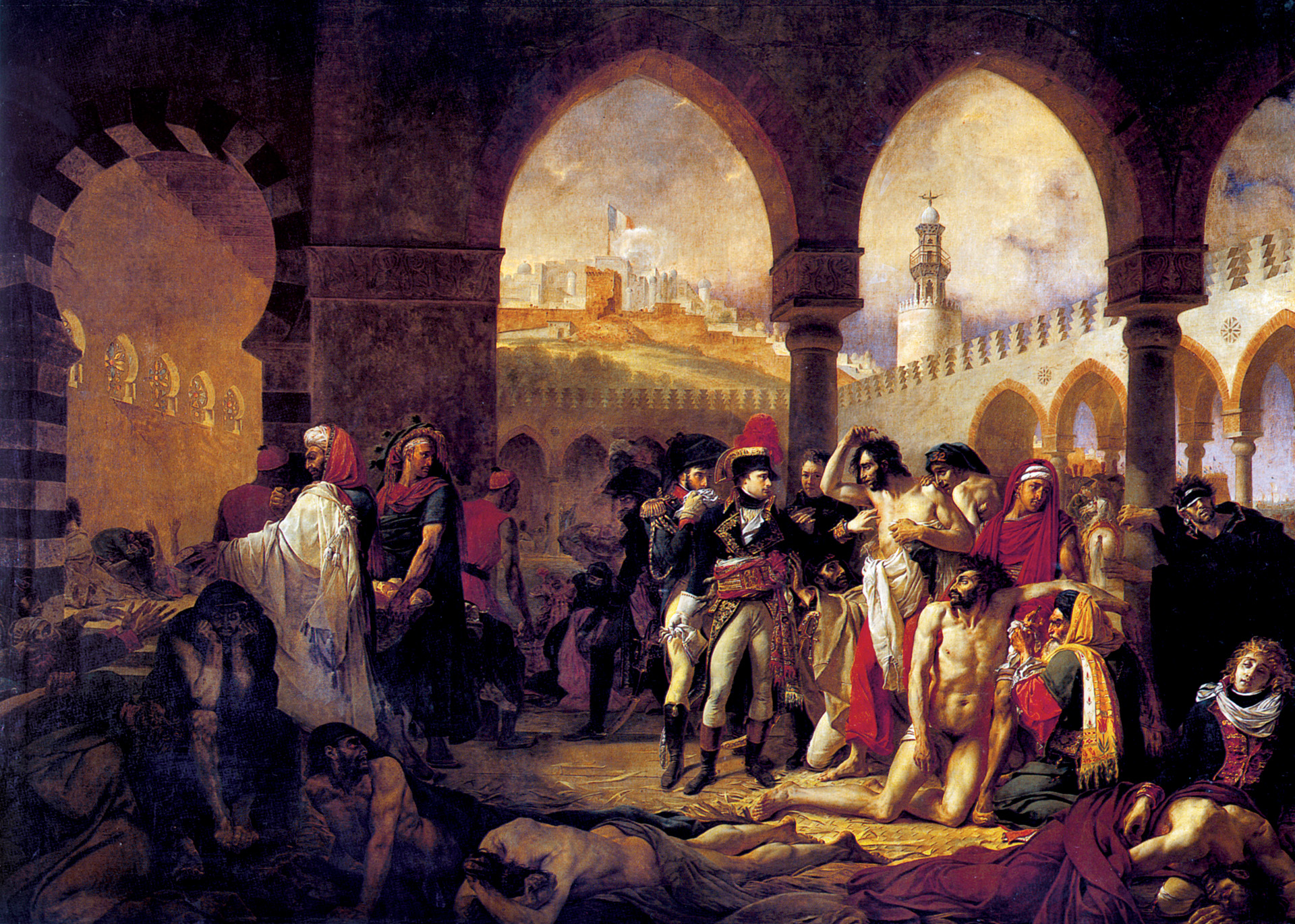
Jazzar seized his chance and aligned himself with this new order with a vengeance. He became his master’s personal bodyguard, enforcer, and professional executioner. It was a line of work he evidently came to relish.
As the years passed in Egypt, Jazzar eventually gained in fearsome reputation and status, In time, he would assume a series of coveted offices, including governor of the city of Cairo, before being promoted for his devoted years of capable service by the Turkish sultan to the governorship of Sidon and Damascus, which included Syria, portions of modern Lebanon, and the whole of Palestine (now Israel). There, when he was not living up to his new nickname of The Butcher, touring about the countryside with a kind of portable gibbet and indulging his passion for forced conversions to Islam, the wholesale massacre of Jews, and the torture and murder of every Christian he could lay his bony hands on, he sat, in the winter of his years, on purple cushions in his capital at Acre.
Enter the French. Having already stormed into Egypt, still a nominal Turkish vassal state, and in eight short months scattered the mighty hosts of the Mameluke Beys, Ibrahim, and Murad (the latest duo to assume the leadership of the aforementioned, centuries-old order of warrior-slaves) who ruled there ostensibly on behalf of Ottoman Sultan Selim III, young Bonaparte decided to try his luck in Ottoman provinces that lay to the east. His objectives were Syria, the Jordan River Valley, and the Holy Land, as well as besieging the storied old citadel city of Acre, just as Richard the Lionheart of England had done some 600 years earlier.
Emboldened by the easy victories of his modern troops against the somewhat medieval forces arrayed against him in Egypt and perhaps unaware of the professional capabilities and ruthless qualities of leadership possessed by Acre’s ruler, Jazzar Pasha, Bonaparte expected the citadel to fall into his lap like a ripe fig on the road to his real objective, the holy city of Jerusalem. Napoleon went off with the bulk of his army in search of a suitably grandiose triumph, leaving a single division commanded by the redoubtable Alsatian General Jean Baptiste Kleber to tidy up in the rear, conduct a reconnaissance in force, and deal with whatever opposition the Turks, the Mamelukes, the Arabs, or anybody else might care to muster on his flanks.
In making this typically audacious command decision in the field, the budding military genius proved not only that he was already a decisive tactician, confident in his own abilities, but also a commander that was equally unafraid to delegate great responsibility to a trusted subordinate. In selecting Kleber for the task at hand, Bonaparte proved to be a good judge of character. Indeed, he could not have chosen a better man.
At 46, Kleber was a seasoned, professional soldier. If his youthful commander can rightfully be called a child of the Revolution, Kleber was equally, in many ways, a self-made man. Born in Strasbourg, in the French province of Alsace, he spent 25 years in the military. In 1776 he began his career in the Austrian Army, and by 1789 he had returned to France and joined the French Army. Advancing to the rank of Major General during the French Republic’s military campaigns in Europe, Kleber briefly held the rank of commander-in-chief.
By 1797, Kleber was as worn out as France’s foes, and with his letter of resignation reluctantly accepted he retired to private life. Within a year, the summons from none other than the meteorically ascendant Bonaparte arrived, offering him command of a full division and the once in a lifetime opportunity to whet his appetite for glory and adventure in the storied ancient land of the pharaohs. It was an offer he could not refuse. In the vanguard, Kleber was nearly killed before the expedition had scarcely begun, when a musket ball came within centimeters of taking off his head. And so it was that Kleber, a man of action, now found himself there, squatting besides the waters of the Nile, tasked with covering Bonaparte’s glory hungry backside, in spring 1799.
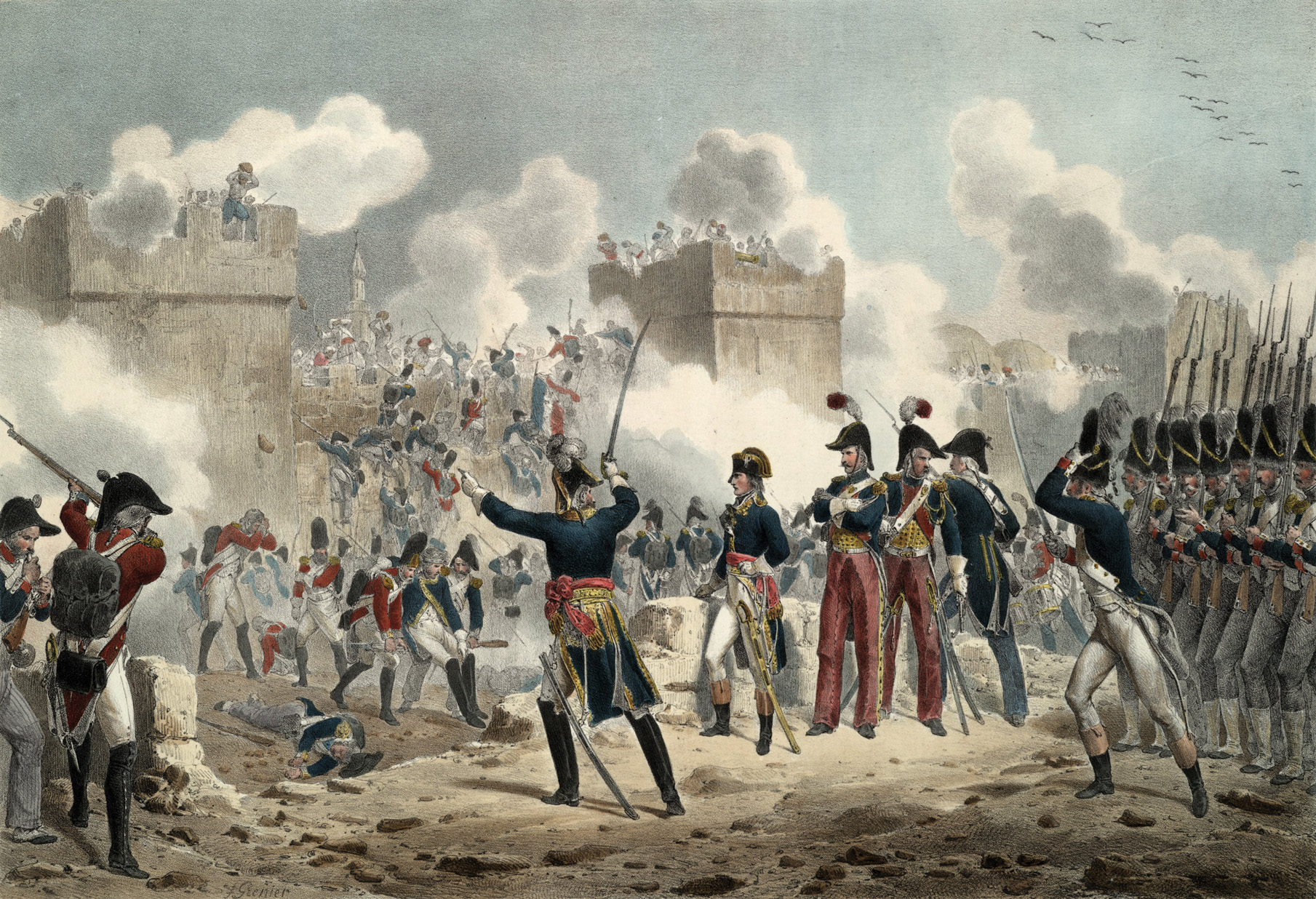
By March 20, Napoleon’s siege of Acre was underway despite the fact that, after easily overcoming the fortress of El-Arish on February 20 and seizing Jaffa, in Palestine, on March 7 (where Napoleon proceeded to slaughter thousands of prisoners just outside the city’s walls), his famous luck began to run out. Bubonic plague broke out, decimating Napoleon’s troops (with some Imams declaring this to be God’s own vengeance against the infidels), though the French were able to occupy the port of Haifa on March 17. A fleet of Royal Navy ships under the command of the positively clairvoyant British Admiral Sir Sydney Smith had arrived off the coast on March 15 to bombard the coastal road, intercept Napoleon’s transport ships, and capture his siege guns.
Smith even managed to put ashore a group of sailors to help Jazzar’s artillerymen at Acre to defend the city. Nevertheless, a confident Bonaparte opined that even without the use of his big guns the enemy might manage to hold out for two weeks at the most. The trouble was that nobody consulted the defenders of Acre, who proceeded to put up a spirited defense. March passed into April, and as the weeks rolled by the French timetable went out the window.
Kleber, meanwhile, standing pat with his small division, was becoming anxious. After watching with envy as Napoleon’s star rose ever higher as his Armee de l’Orient racked up one lopsided success after another during its Egyptian adventure, Kleber finally decided that the best way to discharge the rather thankless task allotted to him would be to take the offensive. Kleber would engage the Ottoman forces streaming out of Damascus and assembling just south of Bonaparte’s position while they were still busy girding themselves for battle and before they could effectively intervene at Acre.
He would do this, straightforward soldier that he was, by means of a cut-and-slash assault on their encampment in Palestine, just below Mount Tabor on the Plain of Esdraelon. It was an audacious idea. The Turks had about 35,000 men, with approximately 25,000 of them mounted cavalrymen, of which a considerable number were enraged Mamelukes led by Ibrahim Bey, recently driven out of their Egyptian stronghold by the French. Adding to this mighty host were another 10,000 foot soldiers, all of them representing the Sultan, the Turkish Empire, Islam and its prophet, and the elderly crocodile, Jazzar Pasha, himself.
While many of the troops at the Jazzar Pasha’s disposal were poorly trained militia and a grimy horde of volunteer jihadis amounting to little more than an impassioned rabble, Kleber was almost ridiculously outnumbered, commanding a single small division of approximately 2,000 men. His strategy was simple: avoid, if possible, the embarrassing and deadly possibility of annihilation in a set-piece battle far from home against an enemy force that, despite its evident shortcomings, was still superior in number. His task was not only to survive the encounter, but also to carry the day with speed, surprise, and the irresistible martial élan of a better class of soldiery.
Kleber’s sole audacious tactic would be a daring night raid launched straight at the Turkish camp to sow confusion and chaos. He hoped to scatter the enemy before they realized how few in number his men really were.
Since the eyes of the Turks were everywhere, it was safe for Kleber to assume that the enemy was aware of his general location, if not his actual strength. Accordingly, he had to know that he and his men, separated from Napoleon’s main force, might find themselves a tempting target. Kleber could not allow the initiative to pass to his foes. He would have to move fast.
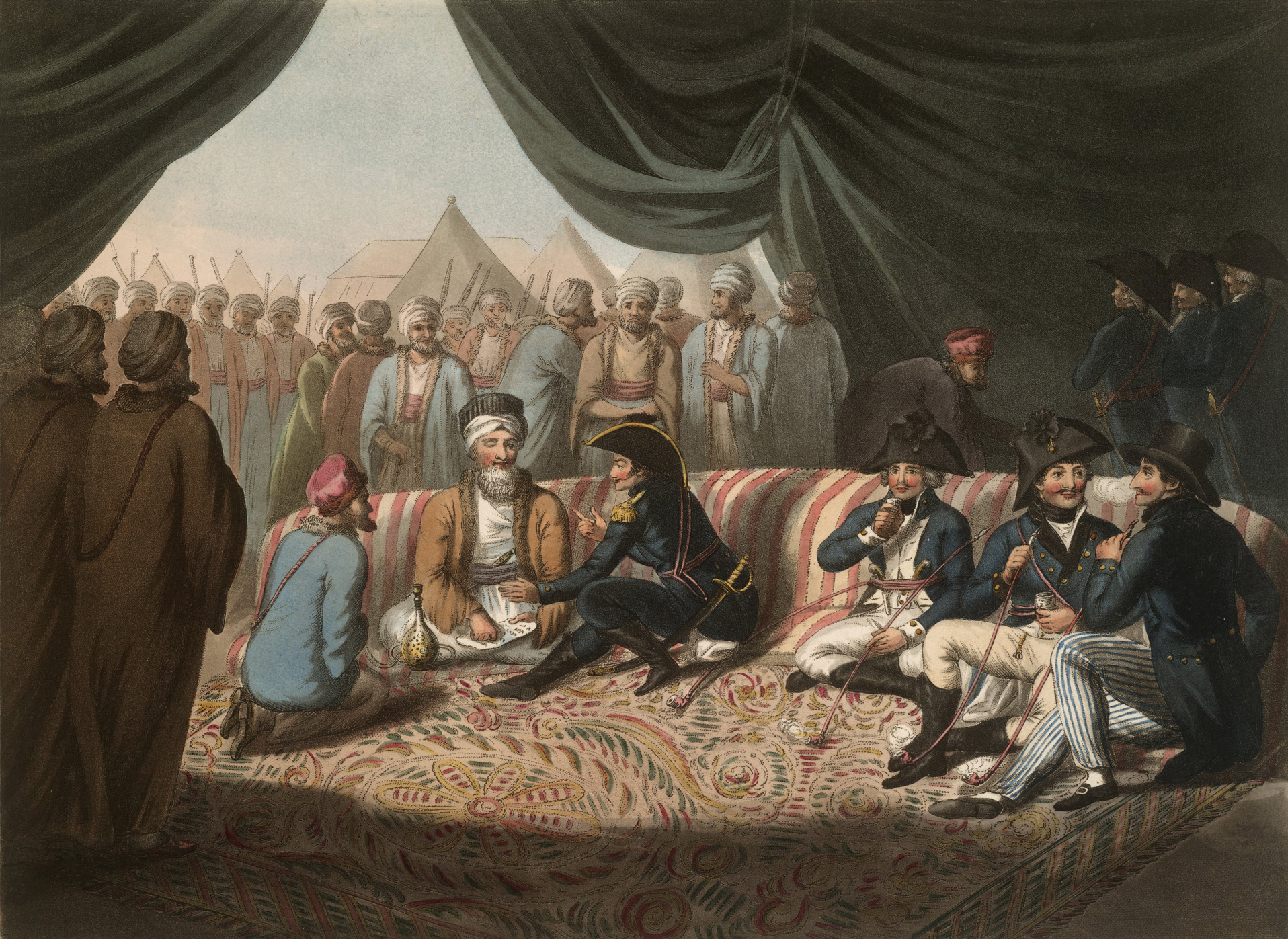
On the evening of April 15, Kleber decided to strike, marching his men around Mount Tabor from the north. In the dead of night, they wheeled east from Nazareth, hoping to smash through the enemy camp on the Plain of Esdraelon. Kleber dutifully sent word to Napoleon, informing him of his intended plan. His bravery lies in the fact that he did so, knowing all the while that by the time the dispatches reached Napoleon he would already be in the thick of it and most likely on his own.
Immediately upon receiving word of Kleber’s plans, Bonaparte rashly dispatched approximately 3,000 of the assault troops already besieging Acre to reinforce Kleber. Riding at the head of this column was Napoleon himself.
With dreams of washing their blistered feet in the Jordan River, Kleber and his men slogged toward the Plain of Esdraelon. As the first rays of dawn began to pierce the night, Kleber and his division had just reached the southern approaches at the base of the mountain, where the Turkish pickets caught sight of them almost immediately and alerted the camp. At about 6 am on April 16, with the element of surprise completely lost, the battle began pell mell. The clamor of war echoed across the ancient landscape.
Almost at once, Kleber realized that retreat was not an option. If his troops tried to make a run for it, they would be cut down in short order before they left the mountain or die out in the open on the plain with the enemy at their backs. He ordered his division to form two infantry squares and face the Ottoman whirlwind. If the French had to die, they would go down like men.
From 6 am until about 4 pm under the blistering sun, Kleber and his exhausted, dehydrated men held their ground against repeated furious assaults. Amazingly, their casualties remained sustainable. However, like Kleber’s ammunition, time was fast running out.
The moment had come to do or die. Under a scorching sun, with no water and next to no ammunition left, Kleber was set to order a breakout toward the Jordan River to the east. It would be a near suicidal action, but the fighting general had no options left. Once his ammunition stocks were gone, the enemy would quickly overwhelm the Frenchmen. Just then, shortly past 4 pm, a soldier shouted that he could see a column of soldiers in the distance and the tricolor fluttering in the haze. Others thought they saw it, too. Then, just as suddenly, it seemed to vanish into thin air, only to reappear yet again.
Kleber suddenly realized that what they were seeing was a French column coming toward them from Acre to the north. The column was rushing forward, cresting the natural slopes and depressions in the landscape as it hurried to join the fight. Through his spyglass, Kleber could see Napoleon in the van. Pouring onto the Plain of Esdraelon, Bonaparte immediately sent 300 of his men straight into the Turkish encampment, just as Kleber had hoped to do, cutting the Ottomans at Mount Tabor off from their camp. On a small scale, it was the classic divide and conquer strategy that Napoleon would employ many times in the years to come. The encampment was quickly sacked and burned, which brought an unexpected but happy consequence for the French.
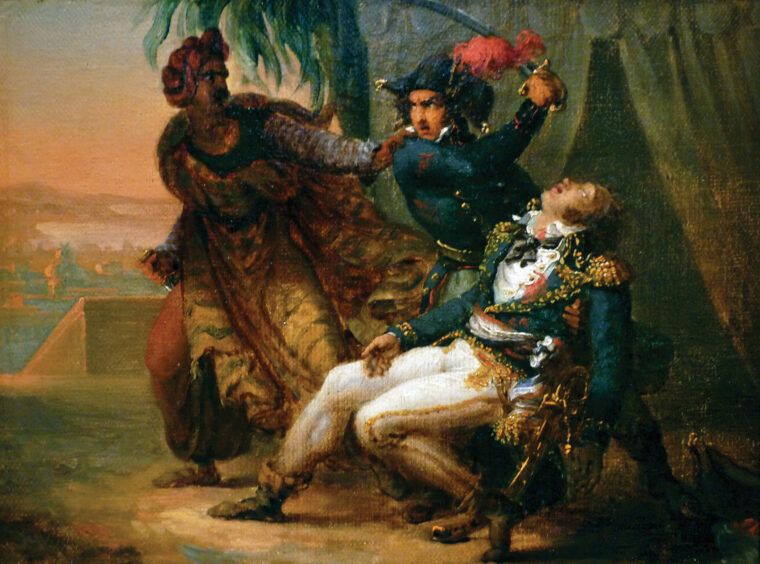
Forced to choose between dealing with the French squares on Mount Tabor and the rescue of their few miserable possessions in the camp, many of the enemy combatants broke from the fight and rushed back toward their burning bivouacs. Turkish unit cohesion broke down as fear of encirclement took hold in the enemy’s ranks. What started out as a few desperate men running down the slope southward onto the plain became a mad, irrational dash by thousands of panic-stricken souls, who suddenly melted away before Kleber’s astonished eyes. Seizing the initiative, Kleber shouted to his men, and they charged after the enemy. Caught between Kleber’s men racing down upon them from behind and Bonaparte’s column rushing straight into them from the north, the Army of Damascus was shredded like so much confetti, pursued all the way to the banks of the Jordan River, which ran red with their blood.
Incredibly, Kleber’s casualties throughout the entire ordeal were just two dead and 17 wounded. It was a great victory and an amazing tale of survival, but if Napoleon had not chosen to reinforce Kleber or had been delayed for only an hour or two it would have been an entirely different story.
As for Acre, Napoleon never did take the city, and on May 20 he called off the siege and fell back into Egypt. There, the British, who controlled the sea lanes, kept him more or less bottled up on the mainland, despite a further string of victories against the Turks and the Mamelukes. As time passed, his Armee de l’Orient found its position in Egypt increasingly untenable as British and Turkish cooperation at sea and on land mounted. Bonaparte, who was more concerned with the political and military situation in France and the rest of Europe than with that of Egypt, eventually put to sea in secret and sailed back to France, determined to mold Europe in accordance with his own towering ambitions. Once back in France, his rivals were neutralized and the squabbling Directory was whittled down to a workable form of government with fewer deputies called the Consulate. Bonaparte, his victory laurels still fresh from his Egyptian adventure, assumed the office of First Consul. It would not be long before he would assume a new and even loftier title, Emperor of France.
His Armee de l’Orient, after an arduous campaign and a Byzantine series of negotiations with Selim III and his British allies, made its own way home. By August 30, 1801, the last French soldier had set sail for France.
The valiant Kleber was not among them. Left in command of France’s Egyptian province, he came upon what he thought was a teenage beggar in the garden of his compound and, bending low in response to his supplications, was rewarded for his pains with a deadly thrust from a young Arab assassin’s knife. Kleber died of his wounds in Cairo on June 14, 1800.
For a time even in death, Kleber was denied a return to his homeland. His embalmed body was shipped back to France, but Napoleon refused to allow him to be buried in his native soil. Bonaparte was never one to share the limelight with anyone. Kleber’s unburied corpse languished in a cell on the notorious island prison of the Chateau d’If for several years. It was not until long after the Age of Napoleon had come and gone and Bonaparte himself was dead that the French authorities brought Kleber’s remains back to his beloved Strasbourg. He was laid to rest beneath a bronze statue of himself in the town square, a monument to a great victory against near impossible odds and to one man’s tenacity and peerless courage.
In Egypt and Syria, Napoleon had shown a continued ability to win battles under unfavorable conditions and also to save his own skin. The latter was a knack that he would exhibit many more times in his famous life.
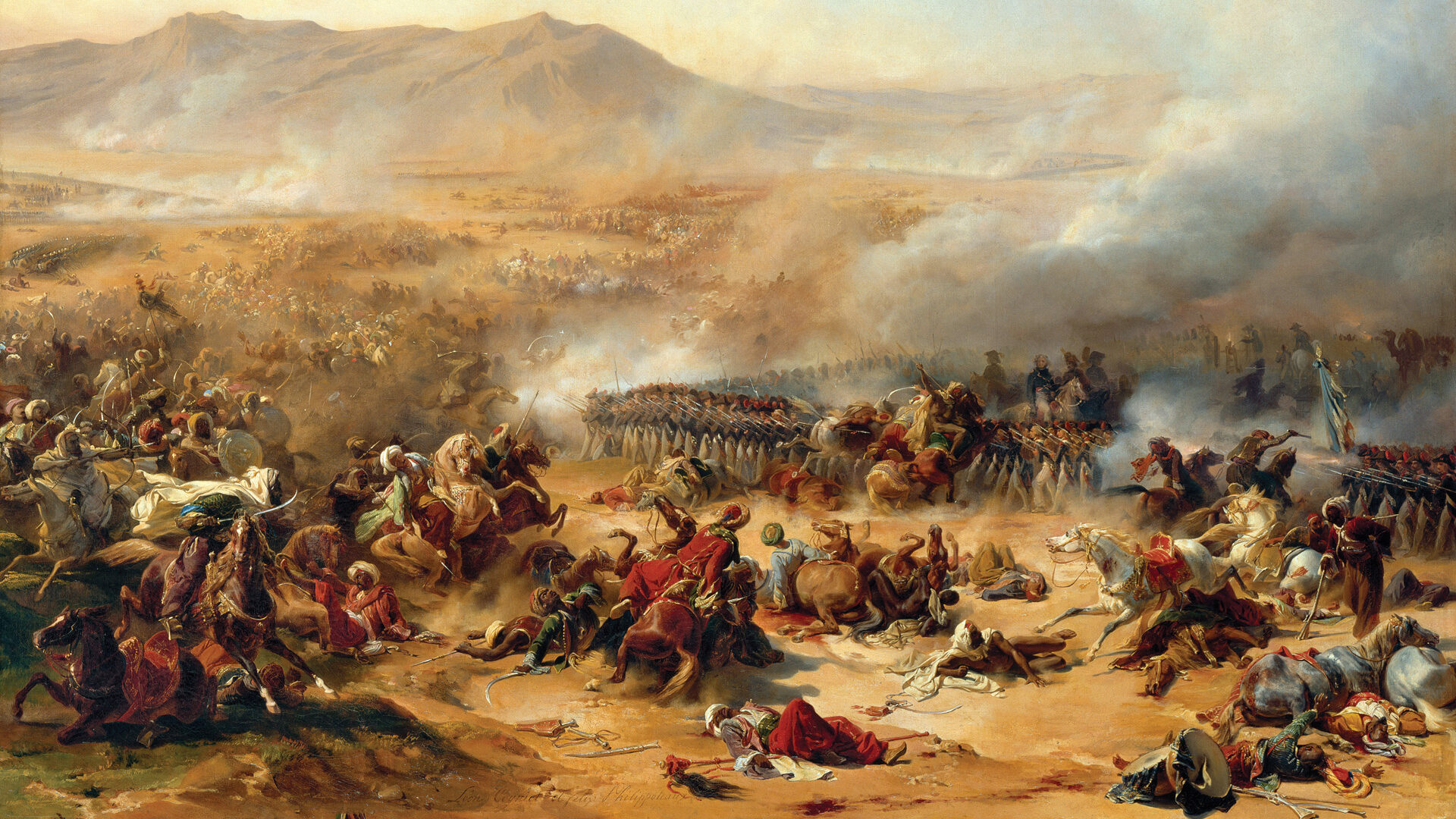
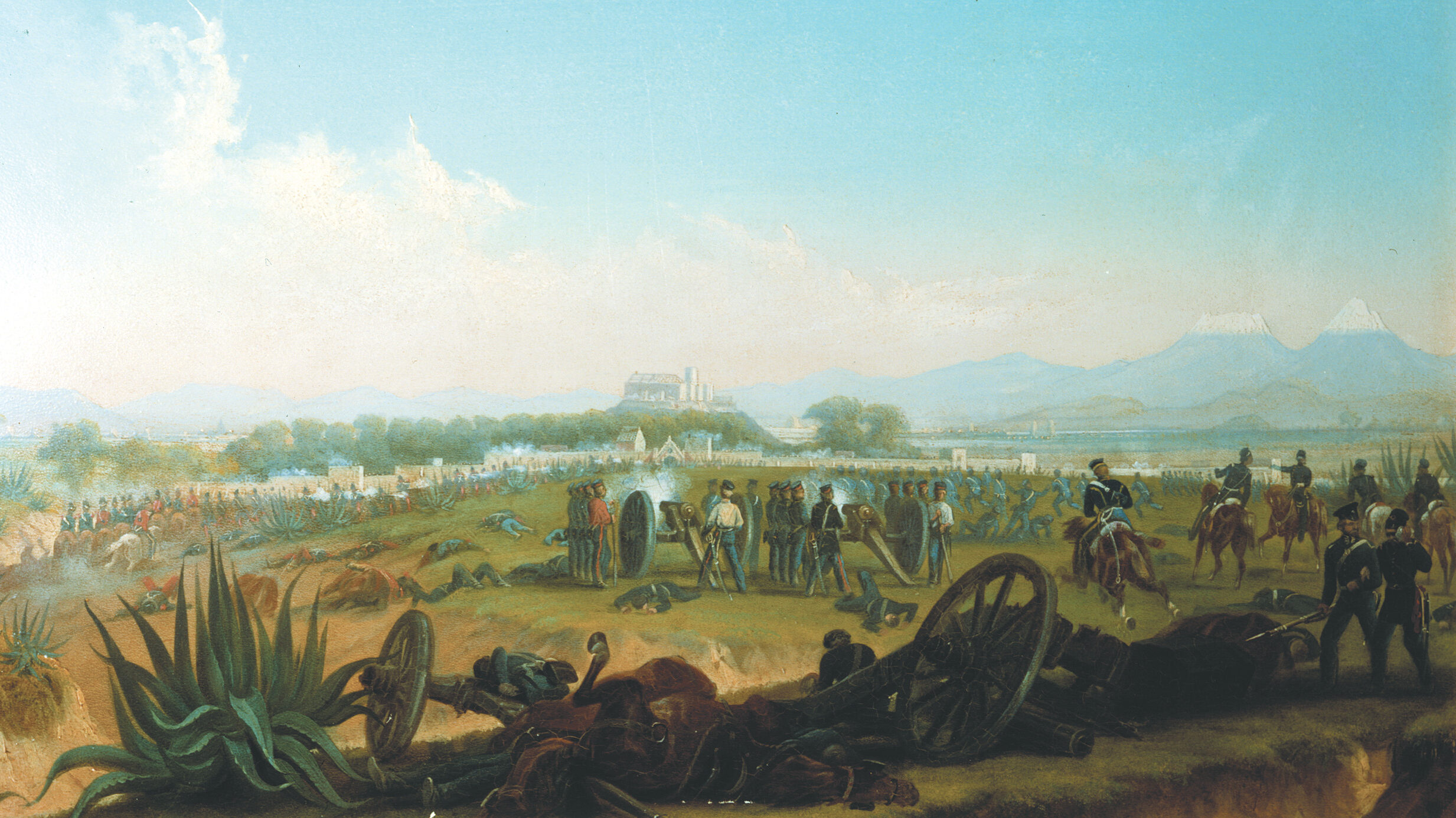

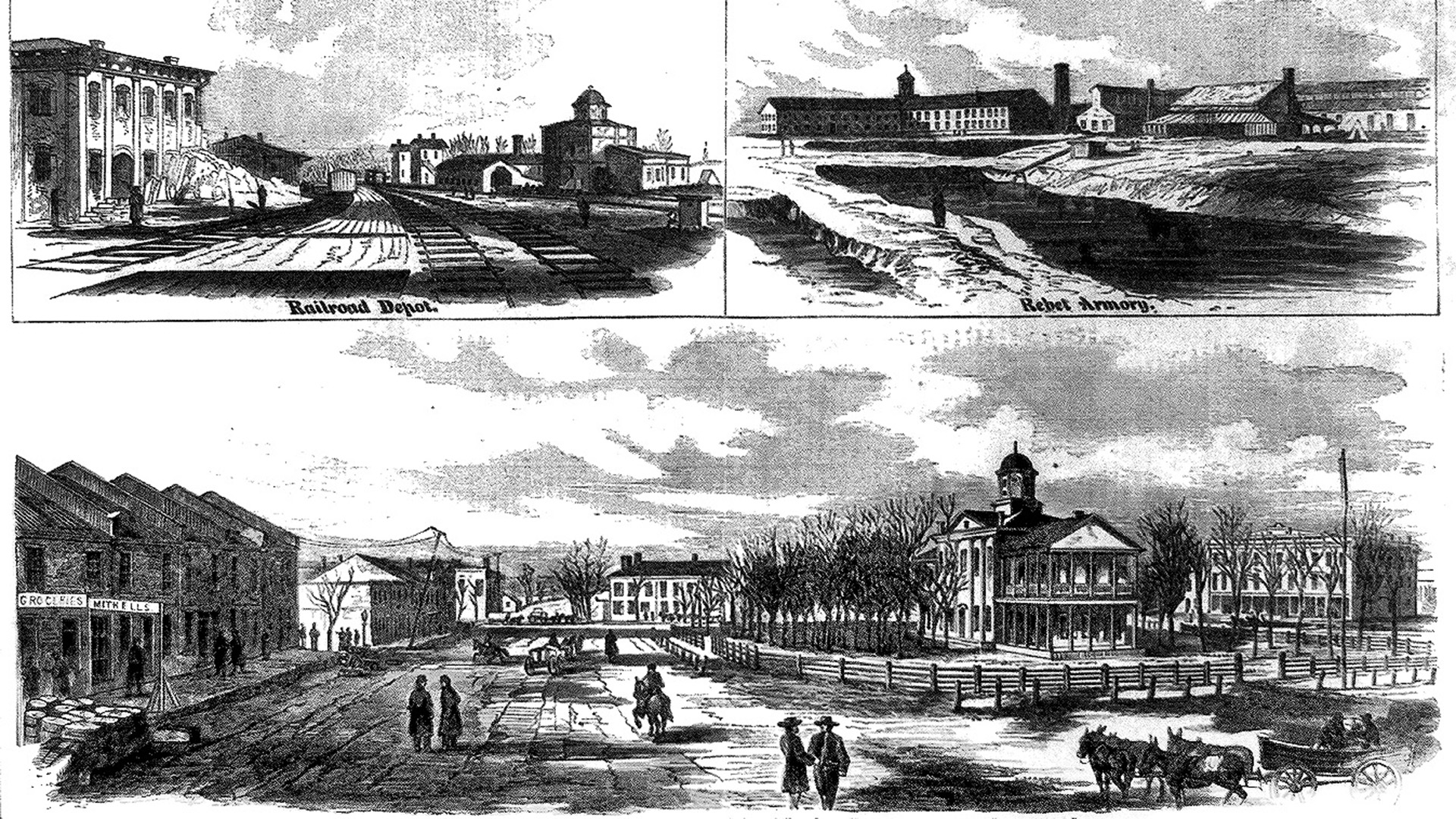
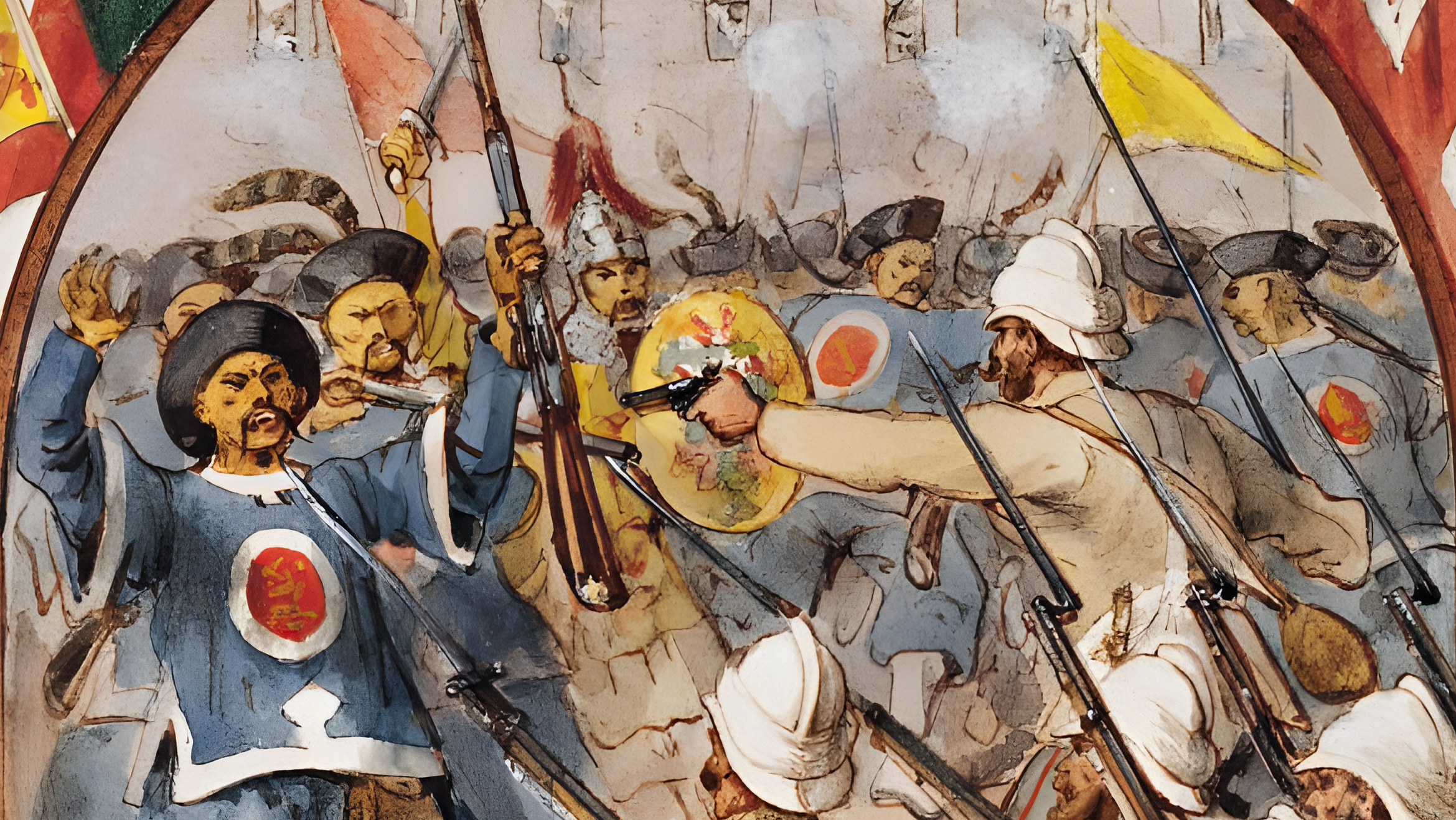

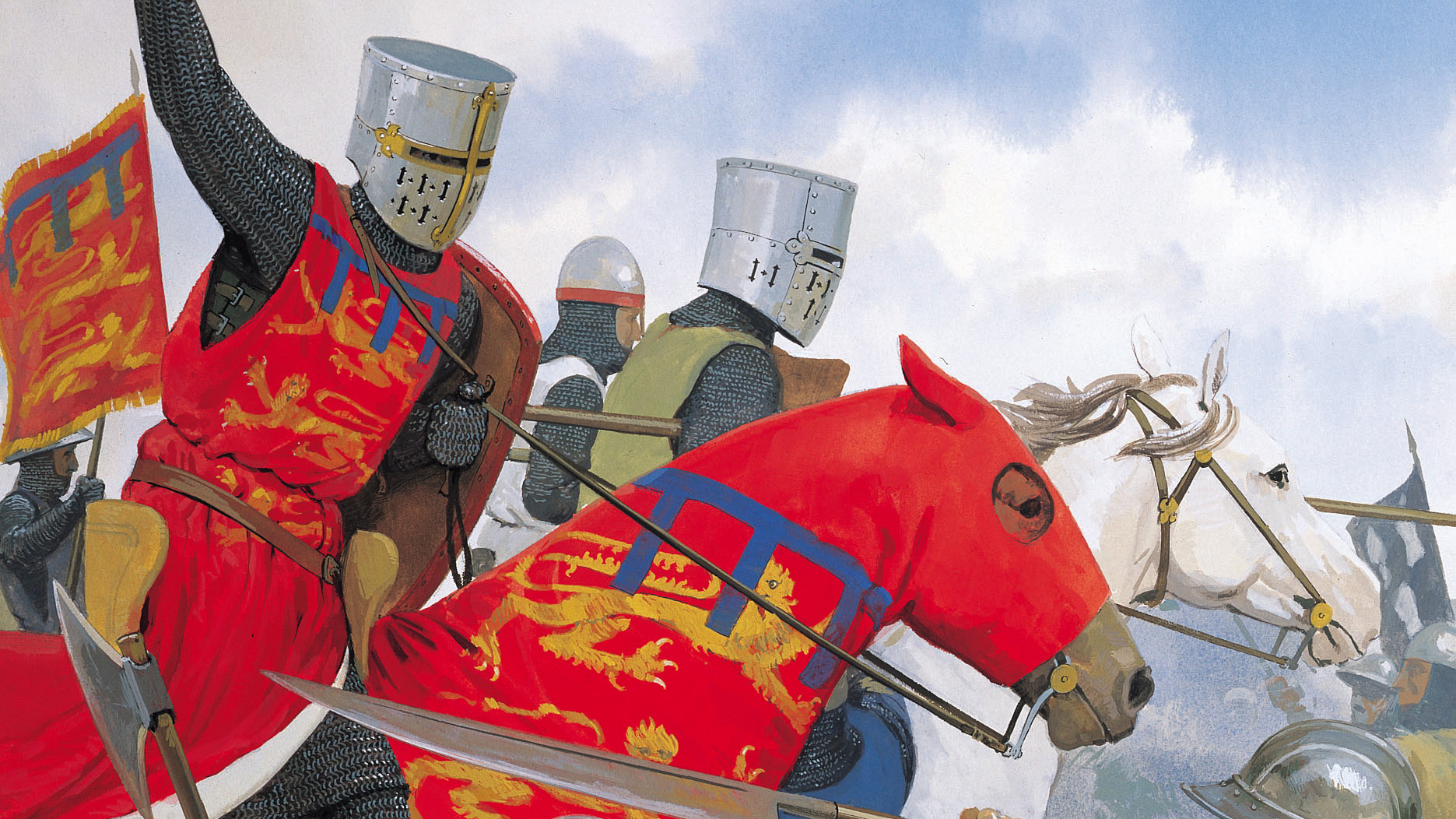
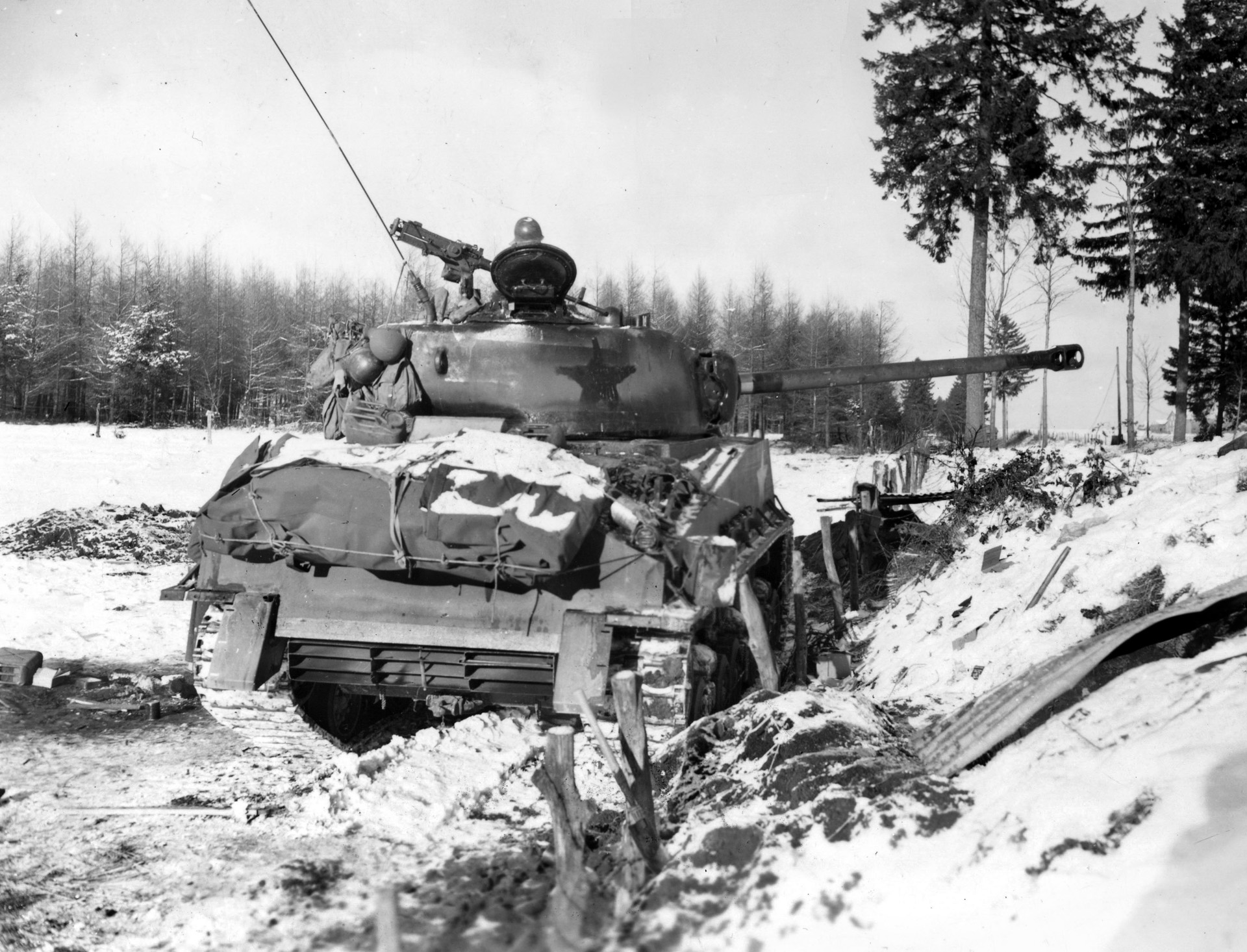
Join The Conversation
Comments
View All Comments